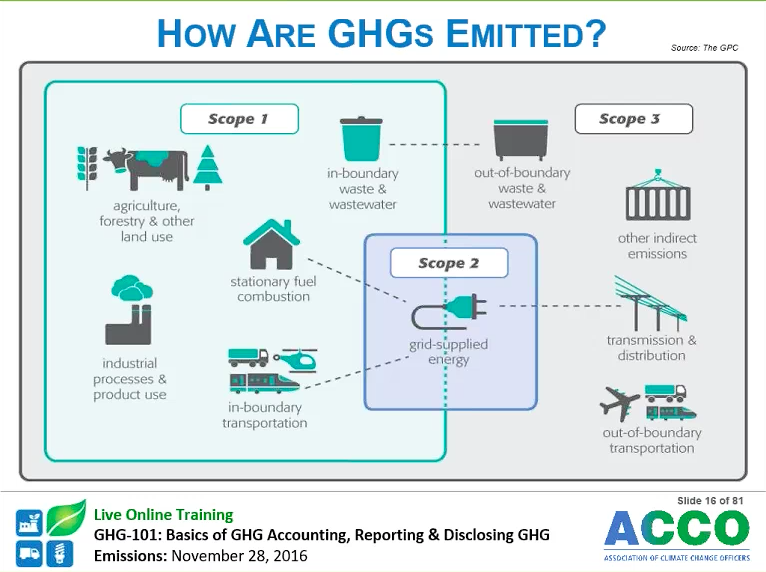|
|
Welcome to the first article of our Green Business 101 series, dealing with carbon footprint and GHG emissions accounting.
How can your organization understand its greenhouse gas (GHG) emissions and carbon footprint? What are the environmental, economic, and social benefits of measured, reduced emissions?
Busy? Try the speed read.
The scoop: You can’t improve what you can’t measure. An organization must accurately measure GHG emissions and carbon footprint to improve its environmental sustainability outlook.
Here’s an interesting set of stats:
99% of F500 companies report being “sustainability-conscious” or mention it as a priority in their goal statements.
A little over 60% made commitments to reduce emissions with varying degrees of comprehensiveness. A common goal is to reach carbon neutrality by 2050, yet most companies don’t have decarbonization roadmaps or intermediary reduction targets.
And less than 15% set long-term and short-term reduction targets in line with corporate standards derived from the latest climate science.
These numbers tell a straightforward story. Sustainability gets a lot of lip service, but most businesses haven’t invested time and money into this objective. Creating a carbon footprint baseline is a high-impact first step in any organization’s sustainability journey, and this exercise achieves diverse goals within profitability and risk management.
Emissions accounting terminology may seem complex, but by the end of this article, we’ll find that the foundations of GHG emissions accounting are relatively intuitive. It’s just a matter of breaking up different impact areas of an organization into smaller, digestible bites.
Dig deeper → 5 min
The Business Case for GHG Emissions Accounting

Why focus on sustainability and GHG emissions accounting?
There’s a common misconception that sustainability efforts require sacrificing profitability or investing in expensive emerging technology. However, by assessing carbon emissions, organizations generate insights into high-impact and high-spend areas of their operations.
These insights create actionable opportunities for high-yield, low-risk transformation projects, driving short-term and long-term cost savings, carbon emissions reductions, risk mitigation, and positive public perception.
But before dissecting “how” to implement decarbonization strategies and solutions (covered in the third article of this series), let’s first explore “why” emissions accounting adds value to organizations and “what” activities contribute to its carbon footprint.
Decarbonization and sustainability efforts create business cases for achieving diverse corporate goals:
- spend optimization
- risk management
- financial reporting and SEC disclosures
- improving public reputation
- attracting customers, investors, and partners. Climate change and business sustainability are rapidly ascending priorities for each group.
As we begin to see rapidly-intensifying regulatory and compliance requirements and financial and social incentives, there’s immense value in being ahead of the curve.
Emissions Sources and Standards
What is the “standard” for emissions accounting?
The GHG Protocol is a nonprofit that works with governments, industry associations, NGOs, and businesses to establish and update emissions accounting standards across businesses, nations, and entire value chains.
The GHG Protocol’s emissions accounting methodology is a focal point of every certified sustainability reporting framework, including the Task Force for Climate-Related Financial Disclosures, which the SEC recently proposed as a new financial reporting requirement for public corporations.
The GHG Protocol splits emissions into Scope 1, Scope 2, and Scope 3 sources. At a high level:
- Scope 1 emissions encompass direct emissions from owned assets
- Scope 2 deals with purchased electricity and utilities, and
- Scope 3 covers indirect emissions across a company’s upstream and downstream value chain.
Breaking down the source of your emissions
What is the source of your emissions, and how can you group them to create high-yield transformation projects?
Even in the early stages of sustainability maturity, it’s possible to paint a comprehensive and directionally accurate picture using the organization’s spending data and energy usage, both of which are easily accessible. The GHG Protocol provides calculation tools and additional guidance to measure emissions.
This exercise is an essential first step in reducing carbon footprint and improving climate impact transparency. For example, here’s a visualization of emissions accounting data from Bosch, a multi-billion dollar engineering and technology conglomerate.
Over time, collaborating across internal stakeholders and 3rd party partners integrates decarbonization goals directly into an organization’s operations.
Emissions accounting helps measure your footprint.
This article covered “why” it’s crucial to measure emissions and “what” factors contribute to our carbon footprint. The following article in this series, “How To Measure Your Organization’s Carbon Footprint,” will cover how to use the data at your disposal to baseline emissions across your organization’s value chain.
Sources: EPA – Scope 3, Scope 3 emissions – enterprise business percentage, Scope 1 and 2 reduction strategies













No Comments